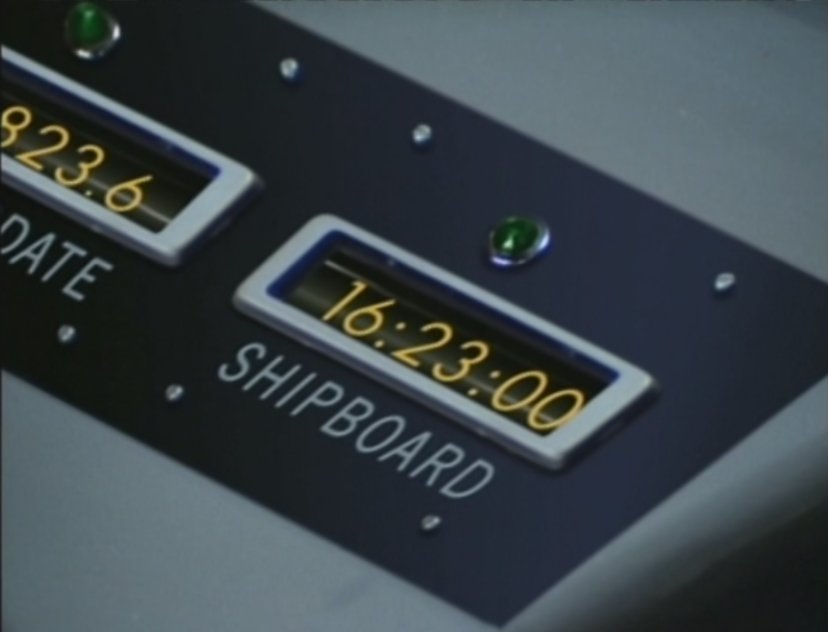The Star Trek Guide said:1313.5 is twelve o'clock noon of one day and 1314.5 would be noon of the next day. Each percentage point is roughly equivalent to one-tenth of one day.
I rarely see this addressed. It is shown in canon, though:Star Trek: The Next Generation Writer's/Director's Guide said:The digit following the decimal point counts tenths of a day. Stardate 45254.4, therefore, represents the noon hour on the 254th "day" of the fifth season.
Decimal to 24-Hour Time
0.0 = 00:00
0.1 = 02:24
0.2 = 04:48
0.3 = 07:12
0.4 = 09:36
0.5 = 12:00
0.6 = 14:24
0.7 = 16:48
0.8 = 19:12
0.9 = 21:36
1.0 = 24:00
Stardate and time Fraction converted to h:m:s
42592.72 17:16:02 17:16:48 Donald Varley's log (TNG: "Contagion")
42605.57 13:40:22 13:40:48
42607.33 07:55:53 07:55:12
42607.95 22:48:27 22:48:00
42608.29 06:58:01 06:57:36
42609.01 00:14:08 00:14:24
Last edited:




